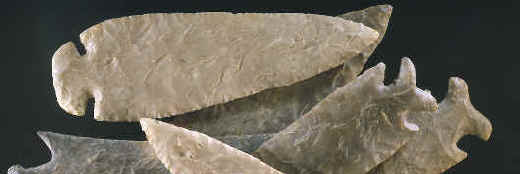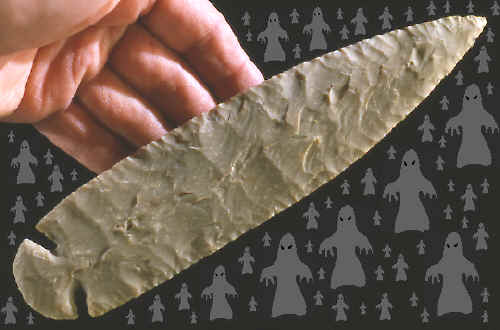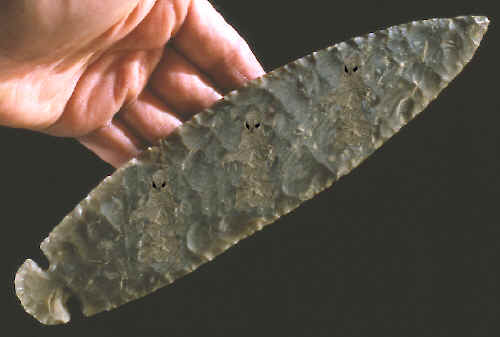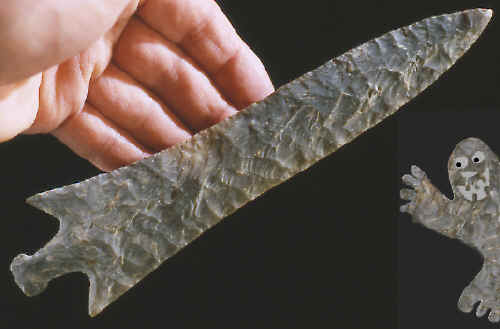|
|
|
|
|
"Gray Ghosts" have caused quite a lot of confusion for more than half a century now. The buying public has had such a hard time identifying them as either old or new artifacts that they have become a modern legend. The first ones were produced in Bryan Reinhardt's "flint spear" factory sometime in the 1940's. "Gray ghosts" are large modern-made "flint spears" that were made during the 40's, 50's, 60's and early 70's. "Gray ghosts" are scary only when the people that purchase or inherit them, believe they have ancient artifacts of great value. But they're actually nice examples of one man's modern flintknapping art. Each one is a little different and unique. True "gray ghosts" are credited to Bryan Reinhardt because he made so many more than anyone else. He passed away in about 1982, by some reports, of silicosis of the lungs. |
|
|
|
|
The term "gray ghost" comes from the color of the Edwards Plateau chert they were made from. This chert ranges in color from shades of gray to brown and a mixture of both. Edwards Plateau chert is found in Texas where Mr. Reinhardt was a resident. Ghost is a word that has been used to describe artifacts without a provenience (origin), like saying "that's a "ghost point." So it seems logical to call these large gray "flint spears" "gray ghosts." |
|
|
Bryan Reinhardt began experimenting with flintknapping sometime before WW II. It's believed he started by making arrowheads by pressure flaking by hand without the use of any mechanical devise. He was in the Army Aircorp during the war and may have been a mechanic. It wasn't until after the war that he started making long "flint spears" in large quantities. |
|
|
After the war Mr. Reinhardt bought some rock saws and developed some type of mechanical devise that drove off flakes either by direct or indirect pressure flaking. This enabled him to manufacture these large points by the thousands and the numbers must range into the tens of thousands. The fact that the preforms for "gray ghosts" were sawed slabs makes them easy to identify. Unlike most ancient large points that are "rounded" on one or both side in cross-section, "gray ghosts' are very flat. Lay one on a table and the "flint spear" will touch the surface from end to end, or nearly so. Another feature to look for are places where the original sawed surface is still visible and wasn't removed by the flaking process. |
|
| CONTINUE ON TO PAGE TWO | |
|
"REFERENCES" 1997, "Grey Ghosts and Old Timers", Chips, Vol. 9, #1, by D.C. Waldorf. Personal communications with Charley Shewey. |
|






